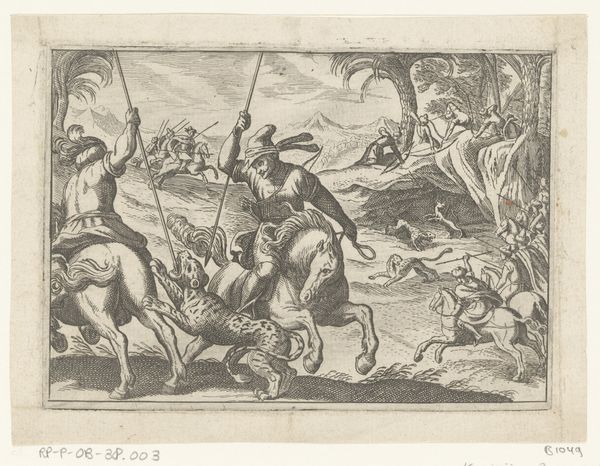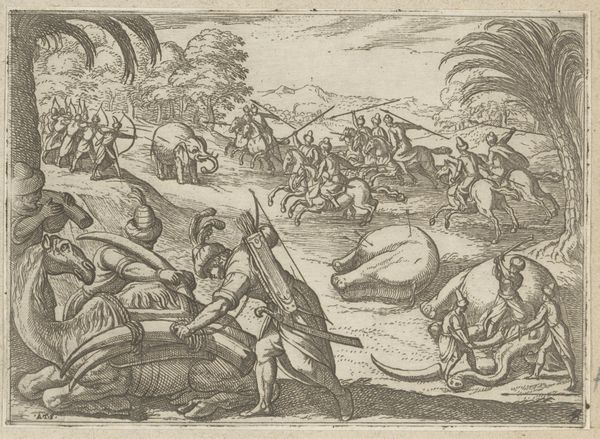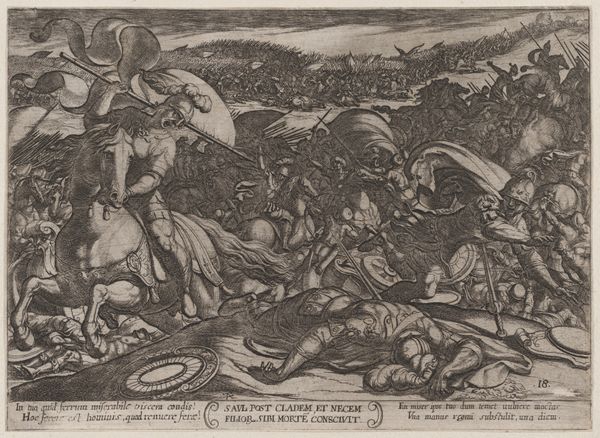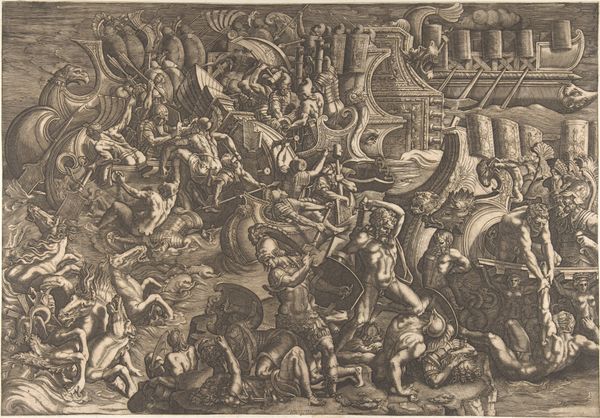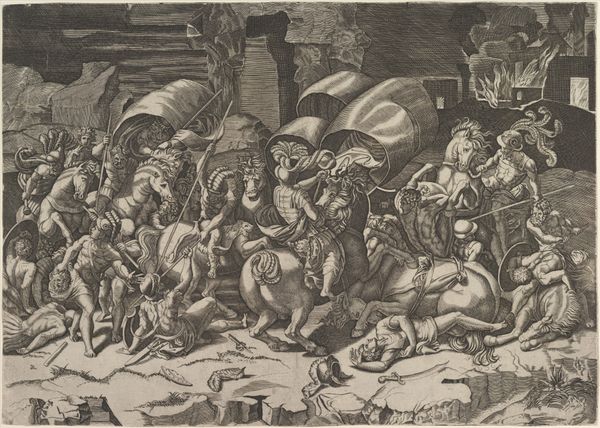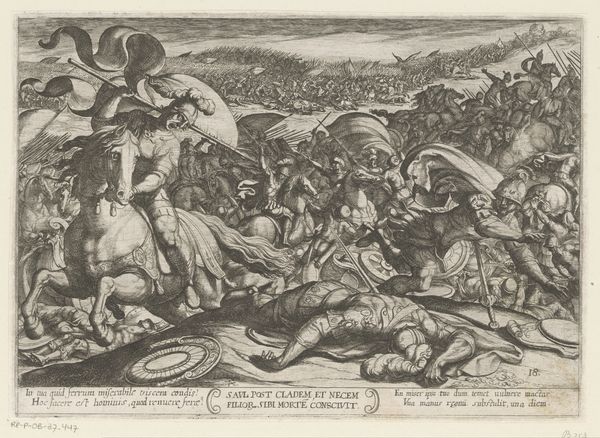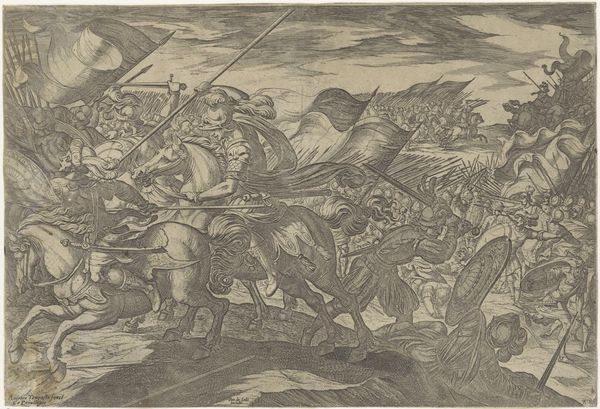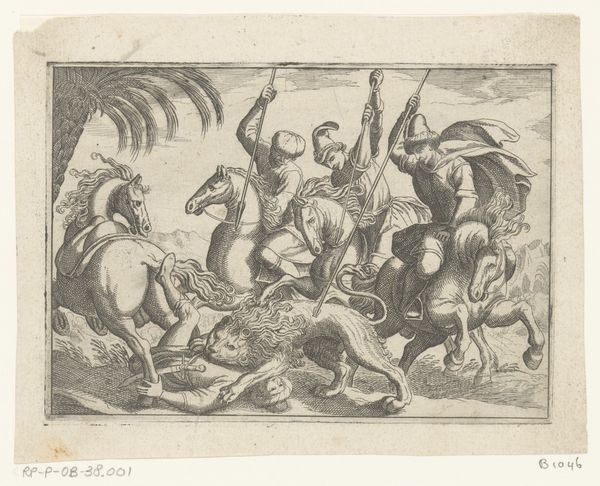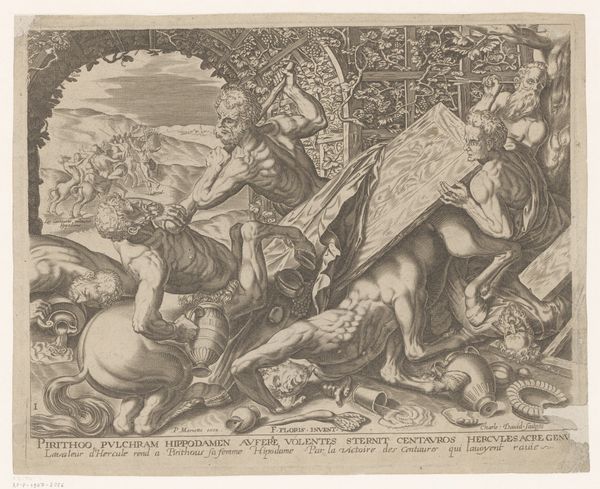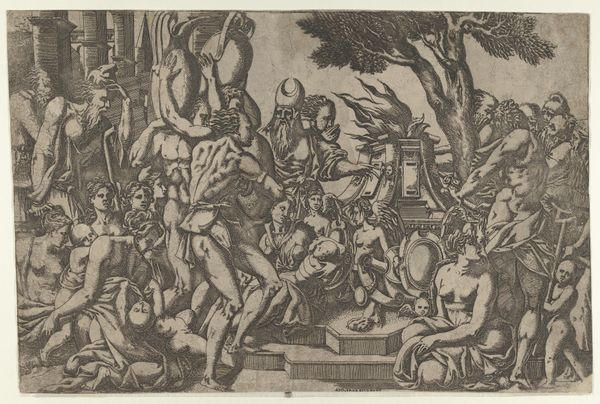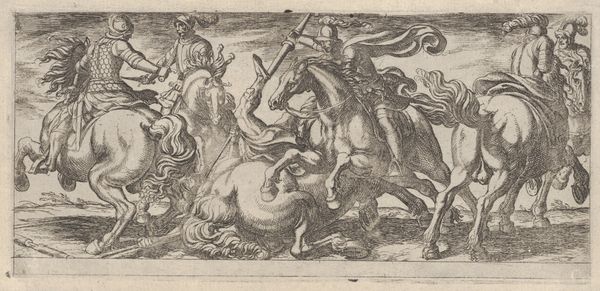
engraving
#
light pencil work
#
ink drawing
#
baroque
#
pen drawing
#
pen illustration
#
pen sketch
#
pencil sketch
#
landscape
#
figuration
#
ink drawing experimentation
#
pen-ink sketch
#
line
#
pen work
#
sketchbook drawing
#
history-painting
#
engraving
Dimensions: height 236 mm, width 324 mm
Copyright: Rijks Museum: Open Domain
Antonio Tempesta made this print of a cavalry battle sometime between 1570 and 1630 using etching, a printmaking technique that democratized image-making in early modern Europe. To make an etching, a metal plate is coated with a waxy, acid-resistant ground. The artist then draws through this ground with a sharp needle, exposing the metal. When the plate is submerged in acid, the drawn lines are ‘etched’ into the surface. The deeper the lines are etched, the more ink they hold, thus varying the darkness and tone of the final print. What's remarkable is that the etcher works indirectly – creating an image not by directly cutting into the metal, but through the agency of acid. The resulting lines have a unique quality, and the relative ease of the technique, compared to engraving, allowed artists to create more freely and produce prints in larger numbers. Here, the etched lines capture the dynamic energy of the cavalry charge, turning the chaos of battle into a commodity, one that could be purchased and studied by anyone with the means to do so.
Comments
No comments
Be the first to comment and join the conversation on the ultimate creative platform.
